
Pu Jin 溥 伒 (1893 - 1966)
| English | Chinese 簡介 | Calligraphy 書法 | Painting 國畫 |
Updated: 03/10/2013

Pu Jin was a member of the Manchu imperial family and a cousin of the last emperor of China, Pu Yi, and the renowned painter Pu Ru. Pu Jin lived through the fall of the Ching Dynasty (1644-1911) founded by his ancestors. His painting of a wearily trudging horse, and the poems inscribed on the scroll by Manchu noblemen and Chinese officials who had served the fallen dynasty, draw on artistic and literary traditions in which horses could symbolize both individuals and the Chinese empire itself. (Pu Jin's father liked to tame horses and was deeply obsessed by painting horses.)
Beginning in the Tang Dynasty, Chinese painters such as Han Gan (active ca. 740-756) specialized in images of powerful horses with muscular steeds that symbolized the military strength of the dynasty and the authority of the Tang emperors. Also beginning in the Tang Dynasty, paintings of emaciated horses came to symbolize neglected human beings, above all talented scholars who deserved, but often failed to receive, recognition and reward. These themes endured in various forms throughout the later history of Chinese painting.
|
"Emaciated
Horse
" by Pu Jin |
|
|
Pu Jin, along with his cousin Pu Ru (1896-1963),
his younger brother Pu Chuan
( 溥佺, b. ca. 1913)
(http://www.aixinjueluo.com/puquan.htm),
and members of the Manchu imperial family, were educated in the
Chinese classics and learned traditional styles of painting and calligraphy. Highly accomplished as a copyist of paintings from the
Sung and Yuan Dynasties, Pu Jin became a professor and later Dean of the College of Art at
Furen Catholic University ( 輔仁大學
) in Beijing. In addition to landscapes and horses, Pu
Jin also painted tigers and human figures, including an image of Zhong Kui ( 鐘馗
), the
Demon Queller. Pu Jin was also working at the Beijing Research Institute
of Culture and History. He was also good at playing Guqin ( 古琴
)
and served as the president of the Guqin Research Association in Beijing.
溥雪齋,滿族,清道光皇帝的曾孫。其祖父為皇五子惇親王奕,父為貝勒載瀛。(載瀛承襲貝勒閑職,無意仕途應酬,專以馴馬、畫馬為樂,時人譽為"馬癡"、"馬翁".) 本名溥伒,號雪齋、雪道人、南石居士,筆名南石、邃園、樂山、松風主人、琴徒等,堂號怡清堂、松風草堂。晚年為名號一致,以字行,乃常用溥雪齋為名。幼年襲封為“固山貝子”( 固山貝子為爵名,清初崇德元年公元1636年,定王公以下九等爵以封宗室,固山貝子為四等爵,位次多羅貝勒,高于鎮國公 )。溥伒善畫山水,所作蕭疏淡雅,氣韻有致,年輕時畫已有名。傳世作品有《秋山圖》扇,款署:“秋山圖,雪齋溥伒寫。”圖錄于《名家藏扇集》。
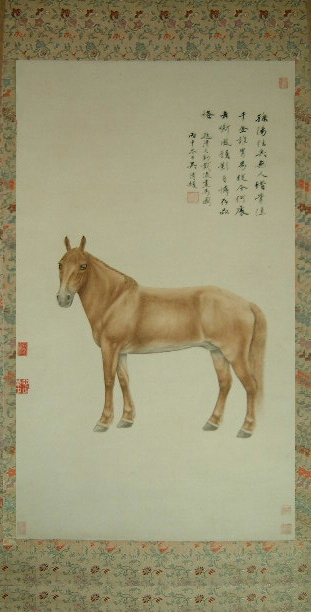
駿馬圖
愛新覺羅.載瀛繪(載瀛是溥佺之父)
Steed by Pu Jin's Father
自古以來,皇室貴族的文化生活豐富多彩,琴棋書畫不可或缺。清代滿族貴族入主中原後,積極倡導漢族傳統文化,熟讀詩書、書法、繪畫成為他們的必修課。清代皇室書法可為三個時期:康熙擬董(其昌),乾隆學趙(孟頫),嘉道以後臨歐(陽詢)。
皇室繪畫則包括山水、花卉、鳥獸、人物等各種題材。康熙大帝雄才武略,書法沈雄剛健、神采飛揚,其《五言唐詩》“解落三秋葉,能開二月花;過江千尺浪,入川萬竿斜”盡顯大家風範。乾隆皇帝的書法以“館閣體”為主,筆墨圓潤秀媚;繪畫更令人賞心悅目,如《紅樹山莊圖》:細草坡上,小樹挺立石旁,枝頭紅葉點點,樹下青竹幾行。構圖清爽,用筆工致,舒靜氣而去凡塵。嘉、道以後,宮廷書法渾厚沈靜,棱角分明,清秀勁健,筆力飽滿。而末代皇帝溥儀的御書黯淡枯竭,透著凋零的淒美;但其《花卉圖》卻極具風致,畫中牡丹色彩豔麗,雍榮而不俗媚,據落款可知繪畫時恰值其大婚之際,喜悅之情躍然紙上。
在家庭熏陶下,溥伒自幼習書法、繪畫。清代末年襲封貝子爵,先后任干清門行走、御前行走,參加校理宮廷所藏書畫。辛亥革命后,溥雪齋以書畫為生。早在1930年執教于輔仁大學美術系,任教授兼系主任。并組織“松風畫會”,研究國畫藝術,培育了大批人材。溥伒與心畬先生兄弟行,同以書畫名,同心畬一樣,是全能的畫家,山水、人物、花卉,乃至畫馬。三十年代有《雪齋畫集》行世。
溥雪齋自幼酷愛文藝,人說“畫如其人”,雪齋先生每日晨起即寫字操琴,具有琴、棋、書、畫,養花、騎馬等多方面藝術修養。1911年始潛心于民族音樂的研究和學習。青少年時即從當時名古琴家黃勉之弟子賈潤風學彈古琴,后改彈三弦等其他樂器,經常參加演出活動直至晚年。琴藝精湛,風格洒脫。1952年被聘為北京文史館館員 (www.bjcss.gov.cn/wsgFore/gyjs/viewcs.asp?wsgcol=gyjs&memid=320)。1957年,北京中國畫院成立,被聘為名譽畫師。曾任民族音樂研究所特約演奏員,中國美術家協會員,中國文聯常務理事,美協北京分會副主席,中國音樂家協會理事,北京畫院名譽畫師,書法研究社社長,古琴研究會會長。他同時也是古琴家,四十年代曾組織古琴會,聯絡同好,切磋琴藝,使傳統古樂得以流傳發展。
溥伒書法長于行楷,以趙孟頫為宗,后習王羲之、李北海、米芾,對《蘭亭》也朝夕臨摹和研究。溥伒是溥儒的堂弟,號雪齋,雖然二溥齊名,其實雪齋株守祖上康熙、乾隆的筆法,與溥儒的博采眾長不同。雪齋先生擅長行草,寫來風格端凝,神采完足,為近代行草書能手。過去曾與友好諸人,創辦書法研究會,并任會長,對推動書法藝術研究與發揚貢獻至多。
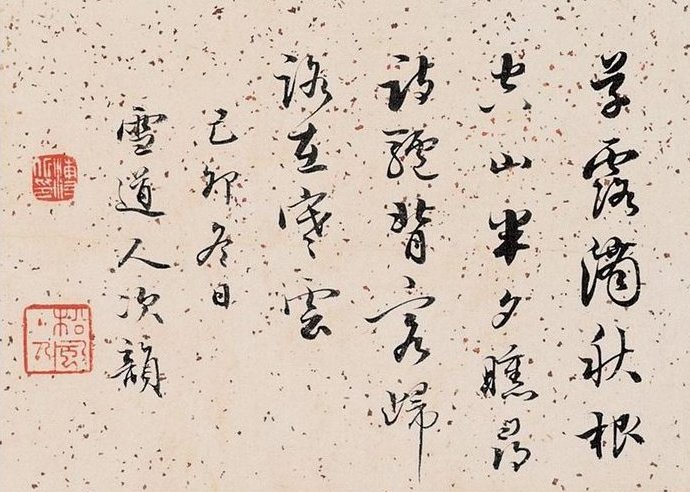
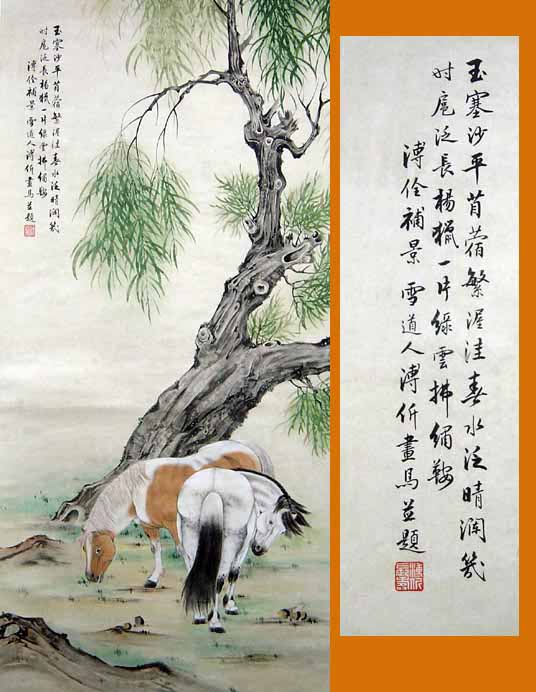
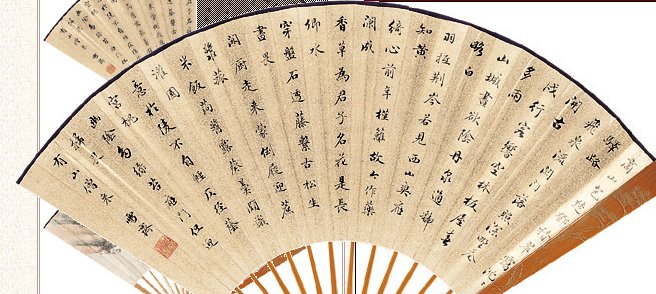
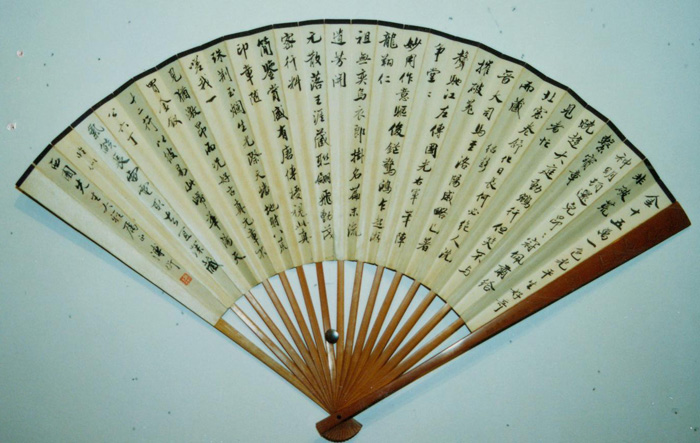

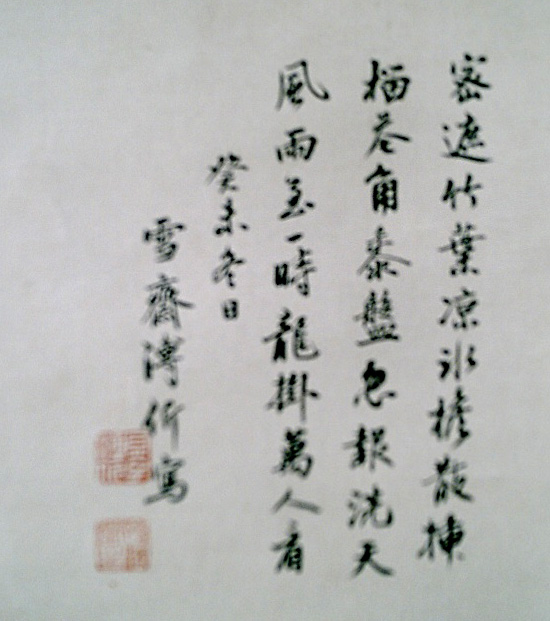
溥雪齋的畫最初承襲宋元風格,精整俊逸,後來轉至明清士人以至民國以後格調,淡遠蕭疏,其山水、花鳥、人物俱佳,尤善蘭花,他的作品中保留了過去名家的某些特色,但沒有明顯獨創風格。山水畫主要受清代宮廷畫風的影響,以細筆山水和青綠山水為主,風格細膩、雅致,著重線條鉤摹,整個畫面充滿著和諧與靜謐之靈氣。
在書畫藝術的創作上,溥雪齋主張明、淨、整、潔,寫意重情。所作山水、人物、鞍馬等,雖謹細而不失神,平心靜氣,一絲不苟,既有詩情,更富書意,“文以達吾心,畫以適我意”。
|
Pu Jin's Tips on Painting Orchids and Horses |
|
|
參考
http://www.aixinjueluo.com/legend.htm
http://www.bjcss.gov.cn/wsgFore/gyjs/viewcs.asp?wsgcol=gyjs&memid=78
http://www.guqin.org/
|
65. 弘涇清渭濁志事卷 64538.5(廣東省博物館藏)
|